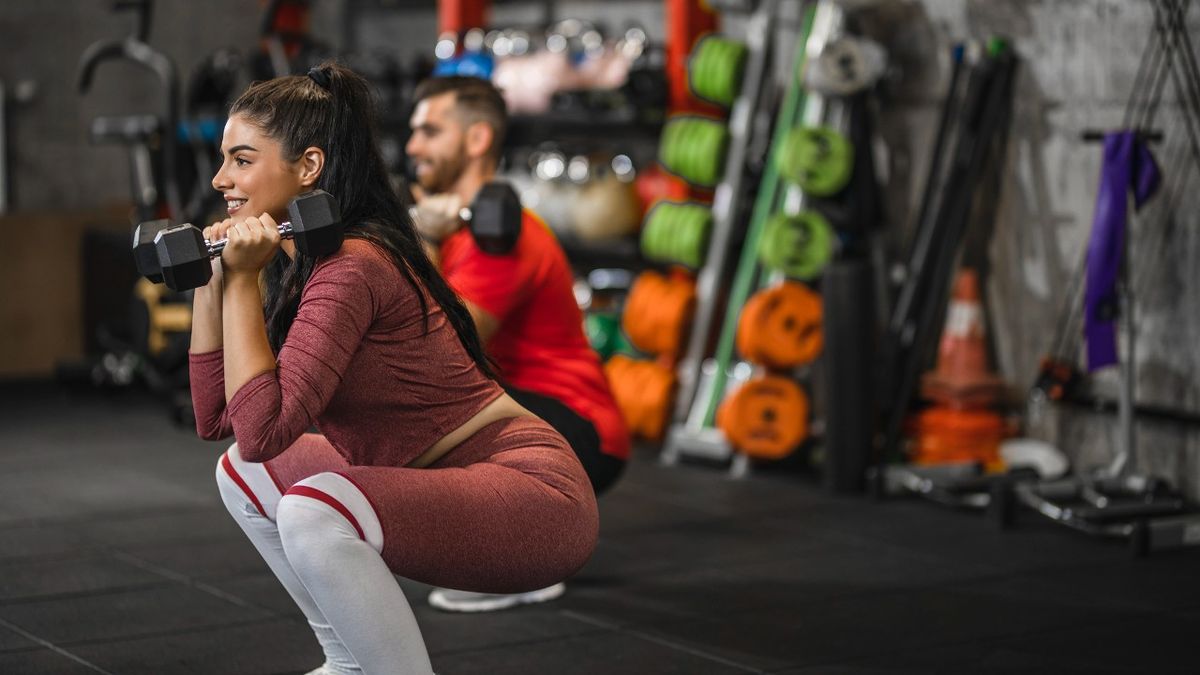It’s rare to walk into a gym and not see someone performing a squat, and with good reason – it’s one of the best exercises you can do, working pretty much every part of your lower body.
Your quads, glutes, calves, hamstrings and a host of smaller stabilising muscles are worked when you squat. It’s also good for your core strength and cardiovascular fitness, because powering through a set of squats always gets the heart pumping.
Most people start with an unweighted squat, which is a terrific bodyweight exercise that’s easy to do anywhere. In the gym the barbell squat is perhaps the other squat you’re most likely to see. There’s no doubt that the barbell squat is a fantastic leg exercise, but it can be an intimidating progression to go straight from bodyweight to barbell, especially in packed gyms where you may have to queue for the squat rack and then exercise while being observed.
The dumbbell squat is a great alternative for those who want to do weighted squats but aren’t sure about using a barbell yet. It’s hard to lift as much weight with dumbbells as with the barbell, but you can certainly still challenge your lower body, and make big strength and size gains with the exercise.
How To Do The Dumbbell Squat
The basics of the dumbbell squat are simple: you perform a squat while holding a dumbbell or dumbbells. If you’re just using one weight it’s best to hold it in both hands in front of your chest, a variation known as a goblet squat.
If you’re using two dumbbells the simplest way to hold them is at your sides, but you can also rack the weights by holding them by your shoulders with your elbows pointing forwards.
Once you have your dumbbells in position, lower into a squat by imagining you’re sitting back into an invisible chair, pushing your hips back and bending your knees. Lower until your thighs are at least parallel to the ground, then drive through your heels to come back up to standing. Keep your chest up throughout the move and don’t let your knees cave inwards – you can loop a small resistance band around your legs and hold it taut to ensure your knees aren’t moving in.
